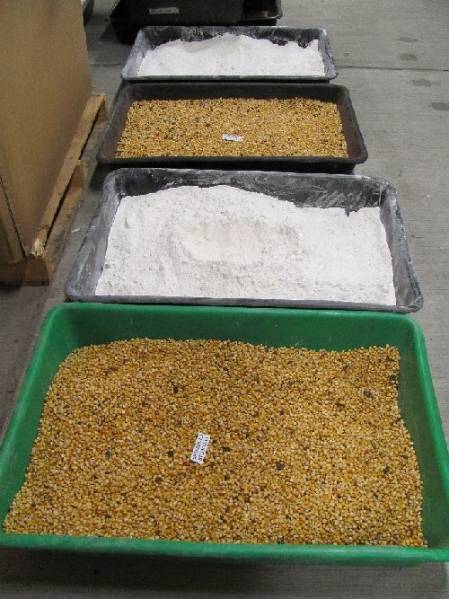Posted by Julie
Date: 23/3/11
Temperature: -13.5
Wind Speed: 15 knots
Temp with wind chill: -28
Sunrise: 7:58
Sunset 19:59
Martin has blogged about how food crates were used as architectural building blocks at both Cape Royds and Cape Evans (see last week’s blog). Stacked into walls, crates of dry goods – predominately corn and flour – remained frozen until needed and also provided additional shelter, a practical system.
As Martin writes, many of those boxes will be conserved over the winter, but then we will return the food boxes to their original locations – i.e., outside, where they will remain exposed to harsh conditions. This situation presents us with a conservation dilemma. We are all aware that if the boxes disintegrate in spite of our conservation treatments, one-hundred-year-old corn and flour will leak into the environment. To make things worse, some of the corn and flour is already significantly mouldy. Mould samples have been tested in previous seasons, and we are confident that the existing mould does not pose a current health hazard (though we continue to take health and safety precautions as we work). However, we do not know what will develop in the future.
Corn and flour drying, before reinsertion into conserved wooden boxes. © AHT / Julie
We are charged with preserving the original configuration of the artefacts, but also with preventing the introduction of materials that could be hazardous to the Antarctic environment or wildlife. In the end, we have settled on a compromise. As Martin repairs the wooden boxes, we are drying the food in large trays, removing any mouldy contents, and then repacking the food into the conserved boxes in sealed, doubled plastic bags. The introduction of the plastic bags alters the original contents of the boxes, but the bags should prevent hazardous leakage into the environment.



